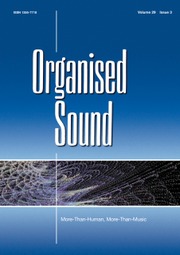No CrossRef data available.
Article contents
Investigating the Physically Hidden: Auditory-based illusions for sound installations
Published online by Cambridge University Press: 30 June 2025
Abstract
Auditory-based illusions and effects are fascinating fields for both psychoacoustic research and sound installations. While such illusions and effects are usually researched in isolated scientific studies, they can also be applied as compositional tools in sound installations. This article addresses the suspenseful connection between psychoacoustic research and sound installations. After defining terms relevant to auditory-based illusions and effects, various aspects of sound installations are described. In that light, auditory-based illusions and effects are described and categorised and examples are provided for their scientific investigation by means of references to key experiments. Further, examples of applications are included that showcase the use of auditory-based illusions and effects in compositions and sound installations. Finally, in order to foster future artistic applications, the connections between illusions and effects are visualised, and sound-installation aspects are provided in a table. Such a combined consideration of psychoacoustic fundamentals and sound-installation aspects aims not only at deepening the methodological knowledge of sound artists, but also inspiring innovative compositional perspectives.
Information
- Type
- Review Article
- Information
- Organised Sound , Volume 30 , Issue 1: Experimental sound from the Black and South Asian diaspora , April 2025 , pp. 68 - 80
- Copyright
- © The Author(s), 2025. Published by Cambridge University Press


